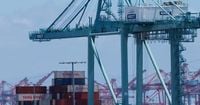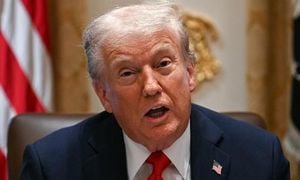For much of the past decade, U.S. manufacturing has been at the center of heated debates about trade, tariffs, and economic policy. Policymakers have touted more restrictive trade measures and high-profile legislation like the Chips and Science Act as potential game-changers for American industry. But as the summer of 2025 draws to a close, fresh data reveals a sector still struggling to regain its footing, despite years of promises and policy shifts.
The latest figures from the Institute for Supply Management (ISM) paint a sobering picture. In August 2025, the ISM manufacturing purchasing managers’ index (PMI) registered at 48.7—marking the sixth consecutive month the index has fallen below the key threshold of 50, which separates expansion from contraction. While the August figure showed a slight uptick from July’s 48, it remains firmly in contraction territory. According to data released Tuesday, this persistent downturn underscores the challenges facing U.S. factories, even as some production has been reshored in recent years.
Higher import duties, once heralded as a way to protect domestic industry, have instead contributed to ongoing struggles. As reported by the ISM and highlighted by multiple economic analysts, these tariffs have introduced new costs and uncertainties into already complex supply chains. The result? Manufacturers are finding it increasingly difficult to plan for the future, invest in new facilities, or even maintain current levels of production.
It’s not just the PMI numbers that are cause for concern. The industrial side of the economy, which includes everything from carmakers to electronics manufacturers, has shown little sign of a rebound. Industrial production itself fell in August for the sixth straight month, according to the ISM’s closely watched index. This prolonged downturn suggests that the sector’s woes are not simply a blip, but part of a deeper malaise.
One of the most telling indicators of this malaise is the sharp decline in manufacturing construction spending. After three years of significant increases—largely driven by the Chips and Science Act, which spurred a wave of investment in new facilities from 2022 to 2024—spending has now reversed course. In July 2025, construction spending on manufacturing sites dropped for the sixth month in a row. From its recent peak, the sector has seen a decline of more than 7% in new construction outlays. This shift is particularly striking given the optimism that accompanied the passage of the Chips and Science Act, which was intended to revitalize American manufacturing and reduce reliance on foreign supply chains.
So what’s behind this sudden reversal? According to ISM surveys and industry observers, much of the blame lies with ongoing uncertainty around trade policy. While the trade wars that dominated headlines in previous years may be “slowly dying down,” as one economic report put it, the damage to American manufacturers remains. The interconnectedness of global supply chains means that even modest disruptions—such as cutting off one or two international suppliers—can have outsized effects on domestic production. Without clear guidance on how tariffs and other trade measures will be implemented going forward, many manufacturers have chosen to hit pause on new investments.
"Tariffs continue to be unstable," one industry executive told ISM surveyors, echoing a sentiment shared by many in the sector. This instability has led to a wait-and-see approach, with manufacturers wary of committing to new projects or expansions until the policy landscape becomes clearer. As a result, spending on new construction has stalled, and the sector as a whole remains in a holding pattern.
The broader context only adds to the sense of unease. While some advocates of protectionist policies argue that reshoring production will ultimately strengthen the U.S. economy, the reality on the ground is more complicated. The very interconnectedness that makes global supply chains efficient also makes them vulnerable to policy shocks. Cutting ties with even a handful of overseas suppliers can ripple through the entire system, causing delays, cost increases, and—ultimately—job losses at home.
Meanwhile, the modest improvement in the August PMI—from 48 in July to 48.7 in August—offers little comfort. As reported by the ISM and echoed in economic analyses, this slight uptick does not signal a turnaround. Instead, it reflects a sector that is still “bogged down by higher import duties” and struggling to adapt to an uncertain environment. The fact that the index has remained below 50 for half a year suggests that, absent significant changes, the road to recovery will be long and bumpy.
Construction spending data further reinforces this point. After surging in the wake of the Chips and Science Act, investment in new manufacturing facilities has now fallen back to earth. The more than 7% drop from peak levels is a stark reminder that optimism alone is not enough to sustain growth—especially when policy uncertainty looms large.
Looking ahead, most analysts agree that the sector will remain in a difficult position for the rest of the year. Barring any new shocks to the system—whether from additional tariffs, global supply chain disruptions, or unexpected economic downturns—greater clarity on the outlook for manufacturing is not expected until at least the second quarter of 2026. Until then, manufacturers are likely to continue treading water, waiting for the dust to settle before making major new investments.
For policymakers, the message is clear: while tariffs and trade measures may offer short-term political gains, their long-term effects on American manufacturing are far less certain. As the sector grapples with ongoing contraction, declining investment, and persistent uncertainty, the need for a stable and predictable policy environment has never been greater. The coming months will be crucial in determining whether U.S. manufacturing can finally turn the corner—or whether it will remain stuck in neutral for the foreseeable future.
For now, the numbers speak for themselves. Six straight months of contraction, declining construction spending, and a sector still searching for direction. As the debate over trade and industrial policy continues, one thing is certain: American manufacturing is at a crossroads, and the path forward is anything but clear.





